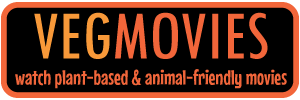Womens' vegan leather jacket
Mens' vegan leather jacket
Many people see leather as fashionable, timeless and think it lasts forever. But if people knew how it affects our planet, people's feelings about leather may change.
As we know, leather is the skin of a slaughtered animal. In many cases, these skins come from cows, but skin from goats, sheep, pigs, and even cats and dogs are used to make leather. Some of the most luxurious and softest leather comes from the skin of newborn calves; so if you have decided to stop eating veal because you just can’t stomach the thought of eating a baby cow, but you’re buying leather, you are likely still contributing to the cruel exploitation of these babies.
Also, the leather industry is wreaking havoc on the planet. The leather tanning process, which turns raw skins into usable leather, fills the environment with such nasties as formaldehyde, cyanide, lead, and other known carcinogens. Tannery workers, as well as people who live in close proximity to tanning facilities, are riddled with a host of health problems which have been linked to the chemicals used in the leather making process.
Manufacturers are taking notice and are offering up products made from materials that are cruelty-free and kinder to the environment, which is better for us all. Here are five terrific alternatives that won’t even have you missing the leather:


